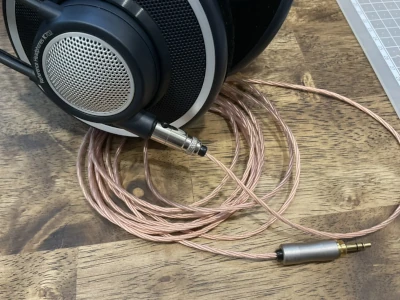Topping PA5 II Sound Quality Review
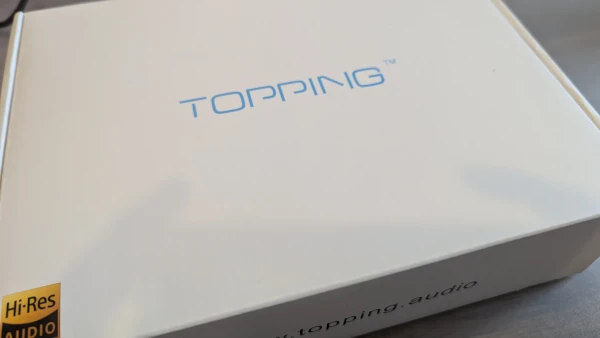
Table of Contents
I purchased the Topping PA5 II from Shenzhen Audio on Amazon. The purchase price was 33,700 yen. Here’s a quick review.
About TOPPING
TOPPING is an audio brand established in Guangzhou, China in 2008. They offer a wide range of products including DACs for desktops, headphone amplifiers, and amplifiers for speakers. Their philosophy is “TOPPING, bringing sincerity to music, bringing beauty to the world.” They provide products that are compact, affordable, and high-performing. Although not sold in major electronics stores, they are highly regarded as reliable Chinese audio brands available on Amazon.
About PA5 II
PA5 II is the latest power amplifier succeeding PA5. It is a Class D amplifier that supports full balance. With a DC 38V/3.0A power supply, it delivers sufficient output for its compact size, providing clear sound quality that belies its dimensions. The pop noise on power-up has been completely eliminated, making it easy to use compared to other power amplifiers in the same price range. The PA5 II Plus features a DC 38V/4.0A power supply, ideal for those needing more power.
The front panel includes a power switch, a switch for single-ended and balanced outputs, and a volume control. The rear panel has the power input, speaker output terminals (compatible with banana plugs), RCA input (single-ended), and TRS input (balanced). Note that the balanced input uses TRS instead of XLR, so be cautious when setting up your environment.
The size is 12.9cm (width) x 16.6cm (depth) x 4.1cm (height), which is very compact compared to other power amplifiers in the same price range, and it weighs only 680 grams.
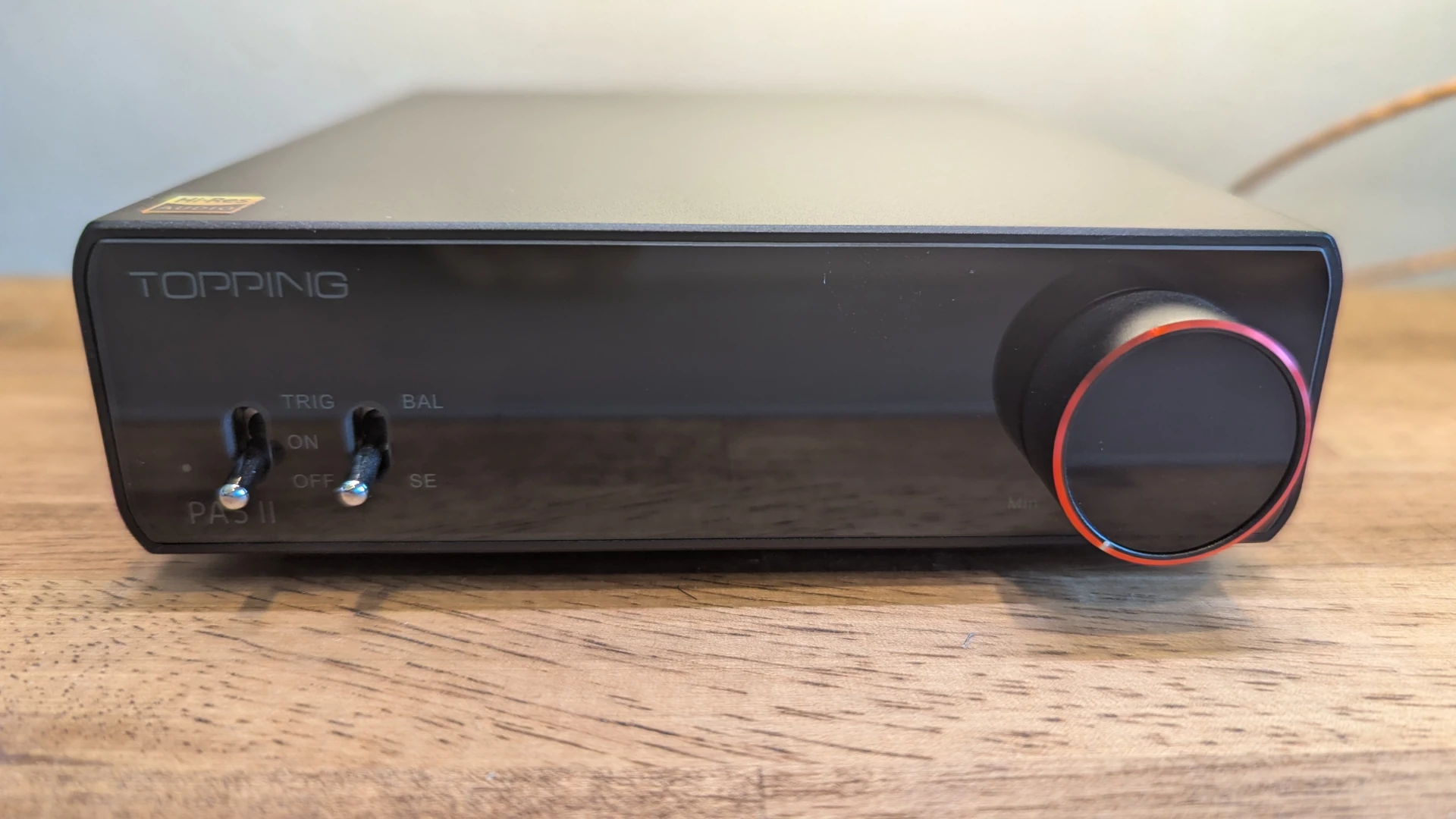
Reasons for Purchase
I am using FiiO’s K7 as a sub-system. This device, which is about the same size as the PA5 II, includes a USB DAC and headphone amplifier. By adding the PA5 II, I can also drive speakers. Among options in the same price range, Topping was chosen for its compact size, sufficient reliability, and track record.
While there are domestic manufacturers like Sony, Yamaha, and DENON, their products often come with unnecessary features or non-customizable power configurations, so I was attracted to the PA5 II for its appropriate size, price, and simplicity to build a simple sub-system.
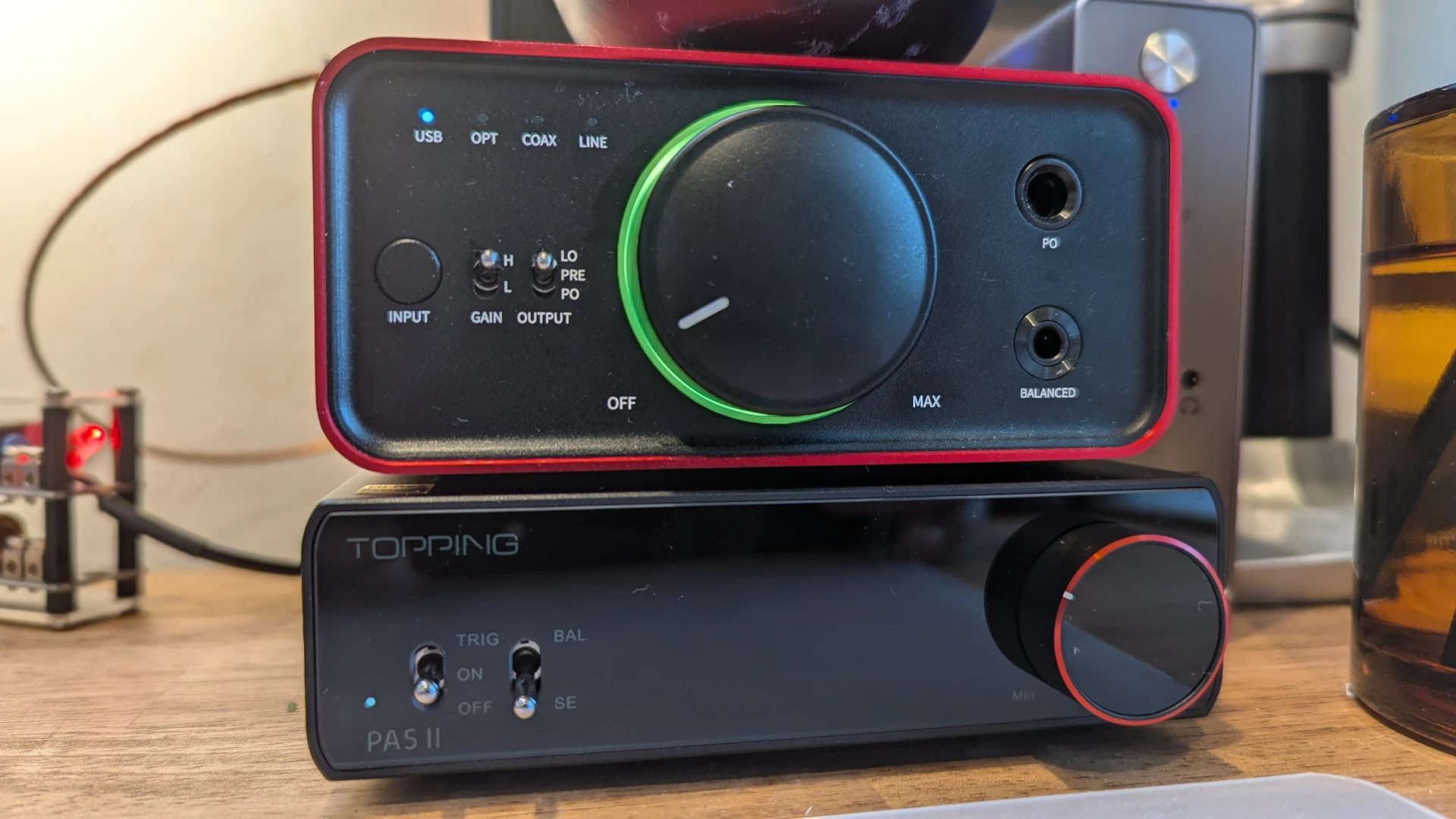
Review
The environment is as follows:
| Equipment | Name |
|---|---|
| Player | iPad mini + Amazon Music (using AirPlay) |
| Transporter | Raspberry Pi 3 + moOde Audio |
| DAC | FiiO K7 |
| RCA | Belden 88760 |
| Amplifier | Topping PA5 II |
| Cable | Zu Audio Mission |
| Speaker | ACOUSTIC ENERGY REFERENCE 1 |
| Wall Outlet | FURUTECH GTX-D NCF(R) |
Since the K7’s line output is RCA and single-ended only, this review is based on single-ended use. For a compact and affordable fully balanced setup, combining it with the same brand’s e50 would be ideal.
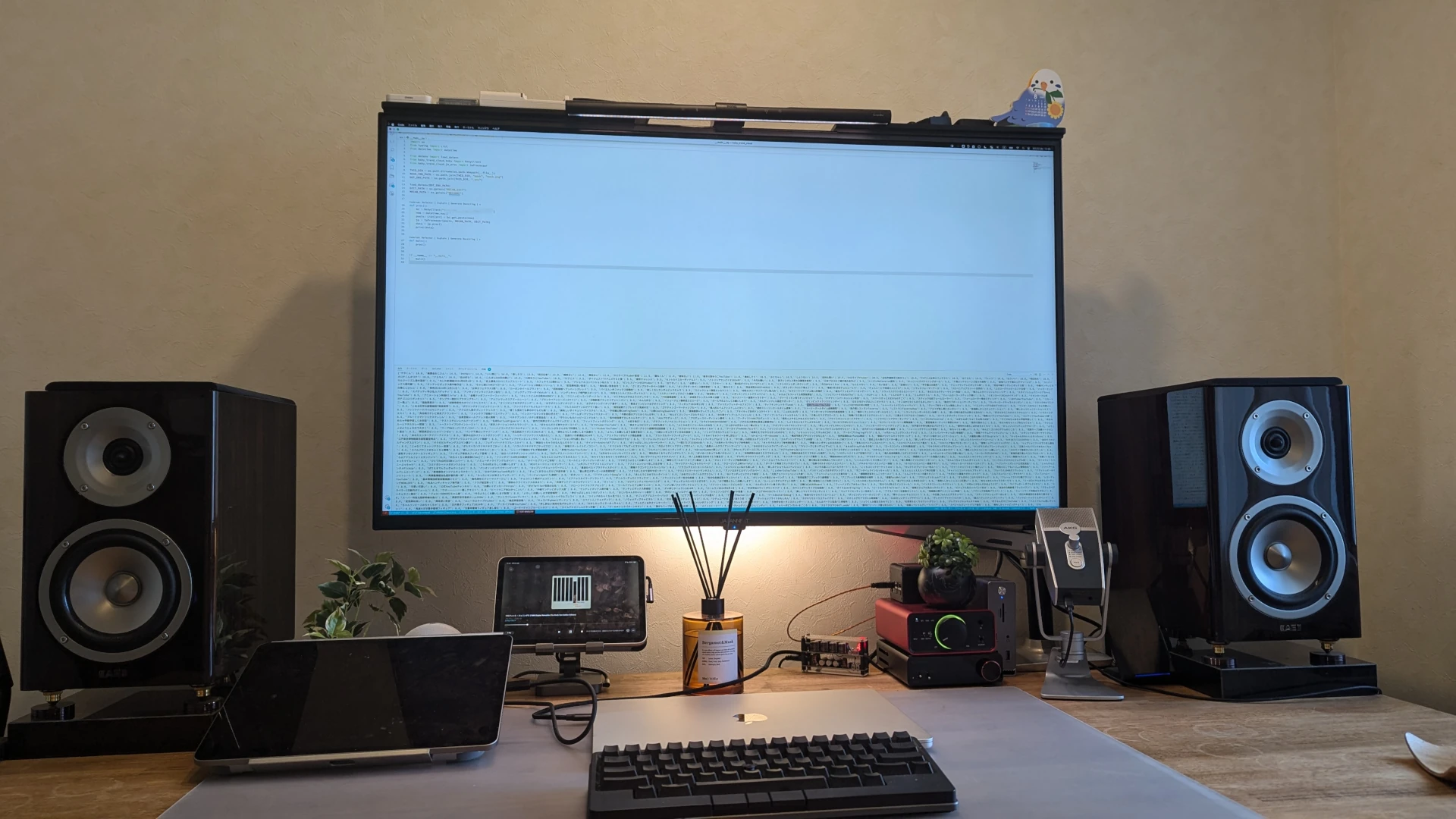
The overall sound tendency is flat and neutral. The high frequencies are neither hard nor soft, with no edge, and they sound cleanly and safely. There’s no particular sense of a wide range or extension, but the lack of quirks makes it reassuring for background music and a good point for long-term use.
The mid-range has a slight softness, so it seems more suited for female vocals. Male vocals might feel a bit high-waisted, so for POP, rock, or metal, it might be a little lacking. It pairs well with female vocals, jazz, classical, or acoustic sources.
The bass also has some softness, but with a slightly fast speed, so for tracks with prominent bass or if you have strong preferences for bass, it might feel adequate. However, it’s in the 30,000 yen range, so there’s a limit to the silence and driving force; it’s not fully driving bookshelf-type speakers. It’s suitable for small speakers or 1-way/2-way speakers in a compact setup. If you need more power, consider combining with PA5 II Plus or e50 for a full balanced environment.
Additionally, there are heat dissipation holes on the sides and bottom of the chassis, and as a Class D amplifier, it tends to get warm. After several hours of use, the entire chassis heats up, but it doesn’t get unbearably hot, so you don’t need to be too neurotic about it.
Other than that, there’s no pop noise or gang error, and it produces clean sound in a small package, making it a user-friendly amplifier.
Future System Building
For a compact sound, the speakers might be a bit excessive; I’d like to try with a smaller 1-way speaker, like the BS-8 enclosure, and track the sound changes.
Summary
I purchased and tried the Topping PA5 II, a staple in Chinese audio. It has a neutral, flat sound and is compact, providing stability that’s reassuring for audio beginners. While it’s neutral, it doesn’t lose the sound’s color or force high resolution or Hi-Fi feel; it’s a handy and solid choice.
Related Equipment
Note: Links to Amazon.
| Name | Features |
|---|---|
| Topping PA5 II | The power amplifier introduced in this article. You can easily use it by connecting it to a DAC’s line out with RCA, etc. |
| Topping e50 | A standalone DAC model that supports balanced output at under 30,000 yen. It’s a top candidate for pairing with PA5 II due to size and TRS balanced output compatibility. |
| FiiO K7 | A headphone amplifier integrated with a USB DAC, supporting 4.4mm balanced output. It features THX-AAA 788+ and doesn’t generate heat, making it easy for desk use. |
| FURUTECH GTX-D NCF(R) | A rhodium-plated wall outlet. FURUTECH’s rhodium-plated products don’t lose mid-range color or make highs noisy; they add mid-range luster and sound freshness. It’s more suitable for speaker listening than headphones. |
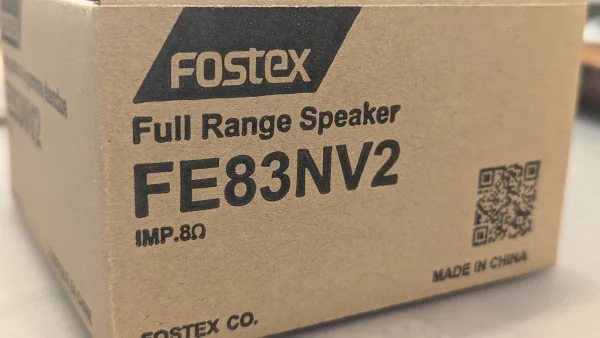
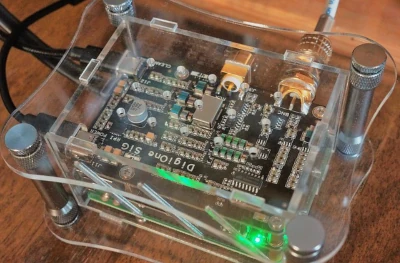
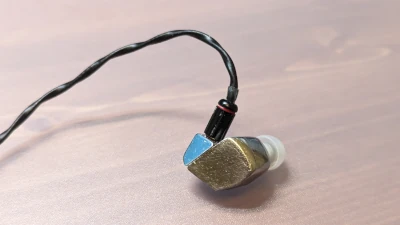
![[Review] I bought the Sony WH-1000XM6](https://b.rmc-8.com/img/2025/05/31/86387faf6089cb5d5732fa3a8e5d211c.jpg)
